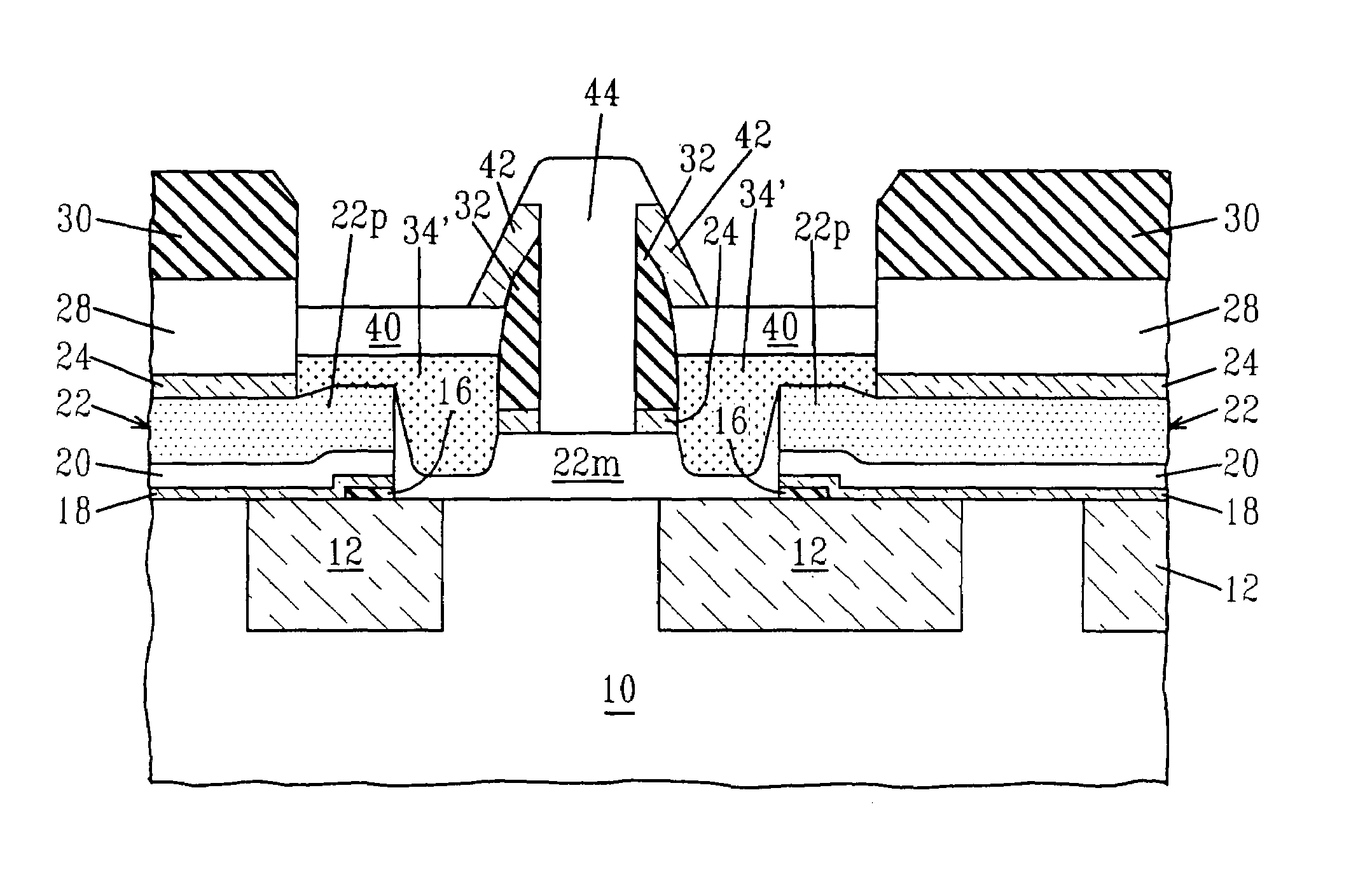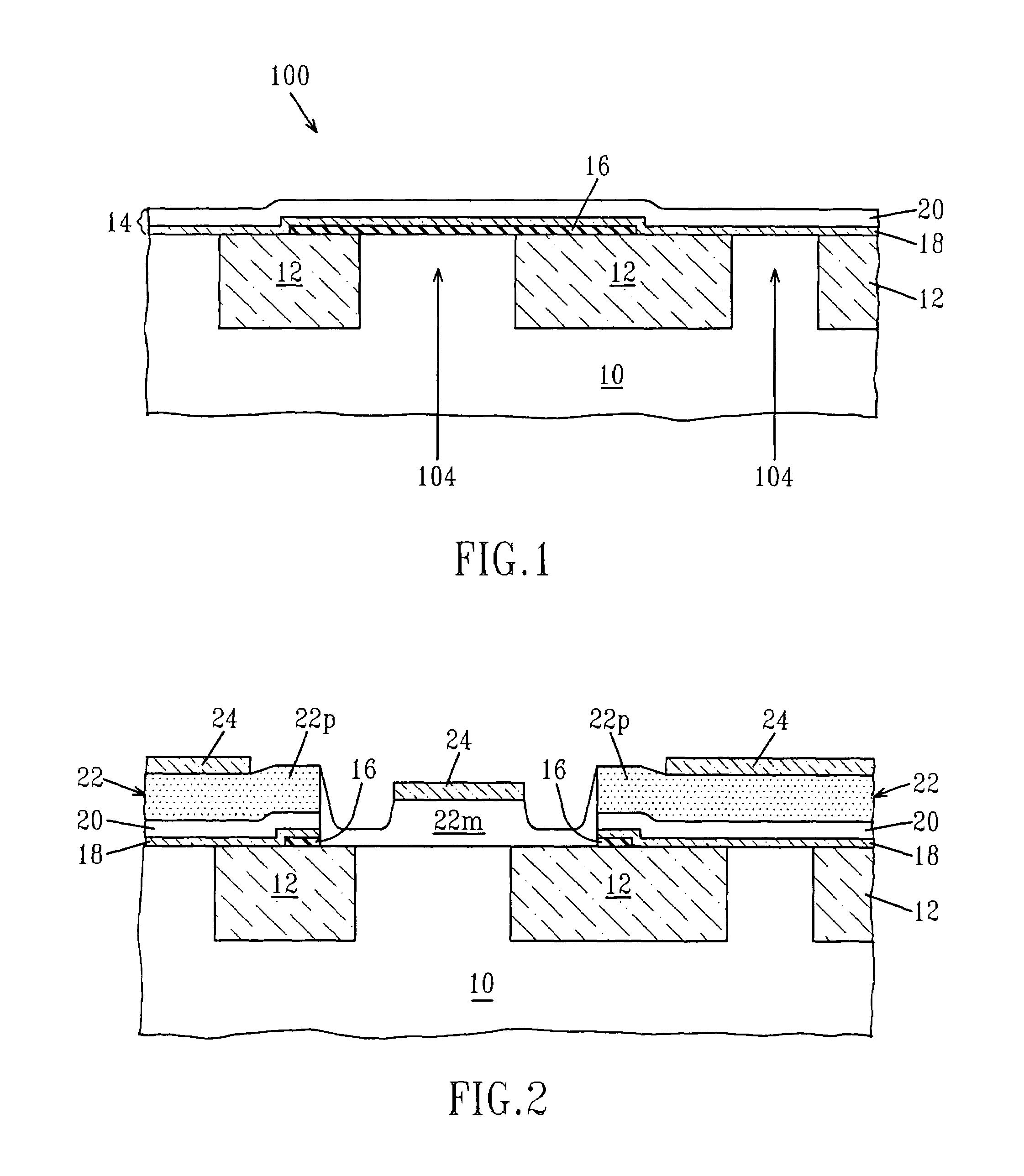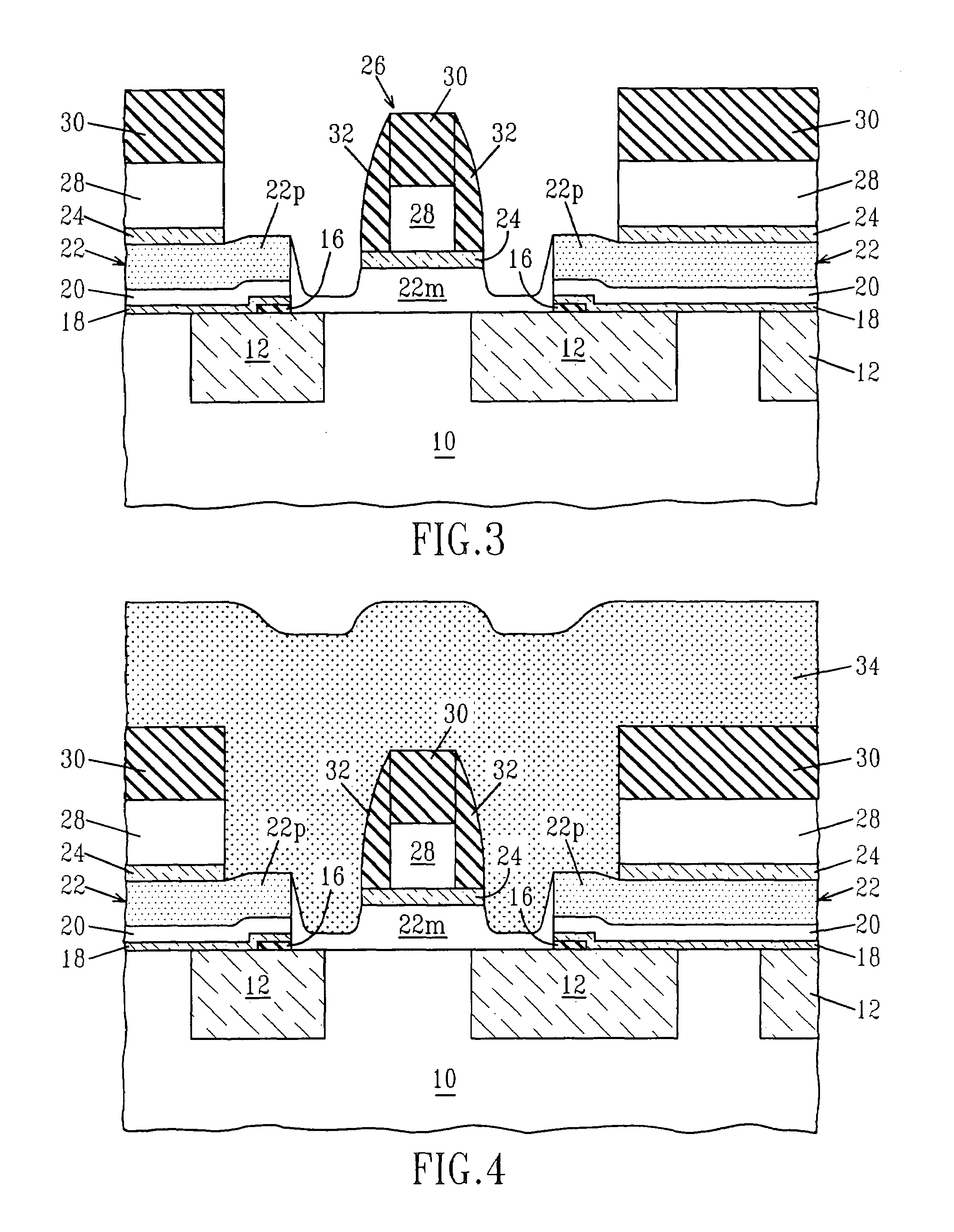Method of base formation in a BiCMOS process
a bicmos and process technology, applied in the field of bipolar transistors, can solve the problems of device performance degradation, serious device operational limitations, and inability to meet the requirements of the base region
- Summary
- Abstract
- Description
- Claims
- Application Information
AI Technical Summary
Benefits of technology
Problems solved by technology
Method used
Image
Examples
first embodiment
[0059]It is noted that in the structure shown, for example, in FIG. 11, the silicide region 40 atop the raised extrinsic base extends to the emitter 44 in a self-aligned manner and the silicide 40 exhibits improved, e.g., lowered, resistivity characteristics. Moreover, the silicide 40 is produced in the present invention such that substantially little or no agglomeration occurs.
[0060]As stated above, FIGS. 1–11 show the processing steps that are employed in a first embodiment of the present invention. In the first embodiment of the present invention, the silicide region is formed prior to emitter formation. As shown in FIG. 11, an inner edge of the silicide region 40 is in contact with the insulating spacers 32 which isolate the silicide region 40 from the emitter 44. In addition to the first embodiment depicted above, the present invention also contemplates a second method of forming a HBT structure having the extrinsic base silicide (i.e., silicide region 40) formed in a self-alig...
second embodiment
[0064]Next, the nitride layers are opened by chemical mechanical polishing (CMP) or etching utilizing oxide layer 29 as a polish stop layer or an etch stop layer. The resultant structure formed after this step of the present invention has been performed is shown, for example, in FIG. 15. In the structure shown in FIG. 15, the upper surface layer now comprises nitride that is located above the raised extrinsic base 34″ and oxide layer 29.
[0065]The oxide layer 29 that is exposed in FIG. 15 together with the underlying polysilicon layer 28 of the emitter pedestal region 26 are then removed by reactive ion etching or wet chemical etching to provide the structure shown in FIG. 16. In FIG. 16, oxide layer 24 of the emitter pedestal region 26 that lies above the monocrystalline 22m base region 22 is exposed.
[0066]Next, and as shown in FIG. 17, emitter polysilicon 44 and a nitride cap 45 are deposited and the structure is patterned by lithography and etching. In this step of the present inv...
PUM
 Login to View More
Login to View More Abstract
Description
Claims
Application Information
 Login to View More
Login to View More - R&D
- Intellectual Property
- Life Sciences
- Materials
- Tech Scout
- Unparalleled Data Quality
- Higher Quality Content
- 60% Fewer Hallucinations
Browse by: Latest US Patents, China's latest patents, Technical Efficacy Thesaurus, Application Domain, Technology Topic, Popular Technical Reports.
© 2025 PatSnap. All rights reserved.Legal|Privacy policy|Modern Slavery Act Transparency Statement|Sitemap|About US| Contact US: help@patsnap.com



